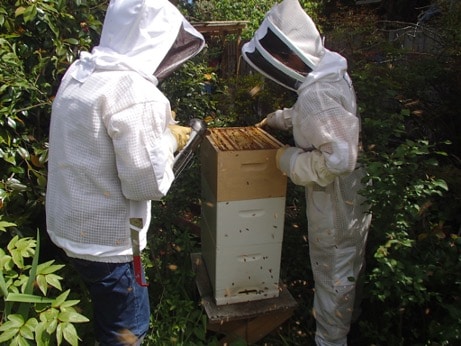Mindfulness: The right frame
Mindfulness and the Emergency Healthcare Professional
Chapter 13: Choosing the right frame
Our reaction to stress, and our external projection of that reaction, that causes the harm...
Under pressure
What a time to practise emergency medicine. Pressure and stress are familiar companions in ED work, but within reason. Conversations with senior colleagues in recent times show a picture of a system under great strain. Our individual management of stress is clearly just one part of the needed system-wide resourcing solution.
But as we lobby for system change, and try to keep going, our individual career sustainability also comes down to how we view and process stress, and how we interact with our colleagues and patients. Are most of those interactions positive, or do we feel emotionally bruised from conversations regularly? What is the overall picture, for us?
Reducing collateral damage
One of the learnings from mindfulness is that we are ultimately responsible for each of our conversations, each of our reactions, and each of our emotional responses. How we relate to others (in a nurturing way, or otherwise) determines not only their likely reaction to our words, but also our own level of happiness.
Taking out our own stress on others may seem easy, as a release valve effect, but the harm it does is ultimately to ourselves. How many of us (I include myself here) have later regretted a comment or conversation, in which we left someone feeling judged and diminished?
This cycle of ‘hurt’ / ‘secondary hurt’ / ‘collateral emotional damage’ is familiar to staff in hospitals, as a consequence of conversations with other colleagues. It need not be so. The level of external stress is not the root cause. It is our reaction to stress, and our external projection of that reaction, that causes the harm. And we can modify that final stage of the cycle, and avoid saying things that cause damage to our colleagues or patients.
Reframing the choice
We can change our perspective about a situation, and here is a simple example of how we can use mindfulness to do just that, and leave the players in a positive state rather than a defeated state.
How we approach a difficult IV cannulation is one analogy of how we can approach every day mindfully, and indeed every moment in that day. The outcomes can be so different if we try to do this.
Let’s take the example in the ED where you as the senior doctor are asked by a junior doctor or a nurse to help with a difficult cannulation. The ED is overloaded, you are understaffed today, the junior medical staff are aware of the pressure…familiar stuff.
There is probably a feeling of irritation forming right about now…thoughts like
- “Why can’t these juniors insert their own IV’s?”, or
- “This is the last thing I need today”
Here there is a choice. Mindfulness highlights the choices we actually have, in the lead-up to our externalised reactions.
What is the choice?
You guessed it. A choice between an ‘irritable’ reaction internally and externally, versus quickly moving into the more mindful ‘nurturing and illustrating IV technique’ mode, albeit a quicker tutorial than usual, because of the current ED overload situation.
Two reaction modes exist – irritability mode and mindful mode
What are the consequences of each reaction mode?
If we are in irritability mode, we are
- more likely to fail to cannulate the patient, because we are not focussed on the cannulation
- more likely to create a ‘fear of asking for help’ in our junior colleague
- missing a positive communication opportunity with the patient, and an opportunity to gain clinically relevant information
If we move our reaction to mindful mode – in this example we could also call this the ‘nurturing and illustrating IV technique’ mode, we now are
- more focussed on the actual cannulation, and therefore more likely to succeed
- teaching a junior colleague, by demonstrating expert technique
- encouraging our junior colleague to approach us in future, thus ensuring safer practice
- creating a ‘micro-silence’ mindfulness moment for ourselves, as we shut out the world to focus on getting the IV in successfully
How do we make the latter choice more likely?
By practising mindfulness. By becoming aware of our own reactions, and deciding to react in another way. By taking back the reins.
Looking at it like this, why would anyone want to choose the irritability mode as our response to the request from our junior medical colleague?
But we still see colleagues, and maybe ourselves, respond to stress through the irritability mode, perhaps because they are not even aware that they are making a choice between two options, or even that there is another choice available to them.
There are two ways to frame a situation – an emotionally reactive frame, and a mindful frame
The two frames
In other words, in most situations there are two ways to “frame” the situation, an emotionally reactive frame, and a mindful frame. The impact on those around us depends on which frame we choose to perceive the situation through, and also which frame we choose to express our reactions through.
The costs of reacting to situations in the ED through the wrong frame include:
- eroded team morale
- damage to interprofessional relationships
- staff leaving
- ED reputation damage
- negative trainee feedback
- increased clinical errors
- negative patient feedback
The overlap between mindfulness and emotional intelligence should by now be clearly evident. Current teaching about ‘ideal leadership behaviours’ draw on concepts from both domains.
Choosing the right frame – for beekeeping!
Frames are also crucial in beekeeping, carefully precise in their measurements and spacing within the hive. This discovery of ideal hive design came about as the result of much observation about what works best for the bees, and harvesting the honey without damage to the hive structure.
**The inventor of the modern beehive was American apiarist and clergyman, Rev. Lorenzo Lorraine Langstroth (1910-1895). He is considered to be the father of American beekeeping, and in 1851 established an optimal hive and frame design that endures to this day.
So, as it is with bees, it is also with our human interactions in the ED. The results we get, and the degree of collateral damage, are all related to the ‘frames’ we choose.
Thankyou for reading this, and take care of yourself
Further reading
- Langstroth LL. Langstroth on the hive and the honey-bee, a bee-keeper’s manual. 1852
- Langstroth LL. Journal on matters relating to bees, etc., begun Jan. 29th, 1852 in Philadelphia, 1852-1862; Vol 1 manuscript
- Dean A. Moving Light: Meditation Journeys. Balboa Press AU 2017
Waiver: These articles represent my own views and approach to mindfulness, and do not purport to be the official view of ACEM. They are not intended to replace appropriate medical or mental health care, provided by professionals in these domains
[cite]


